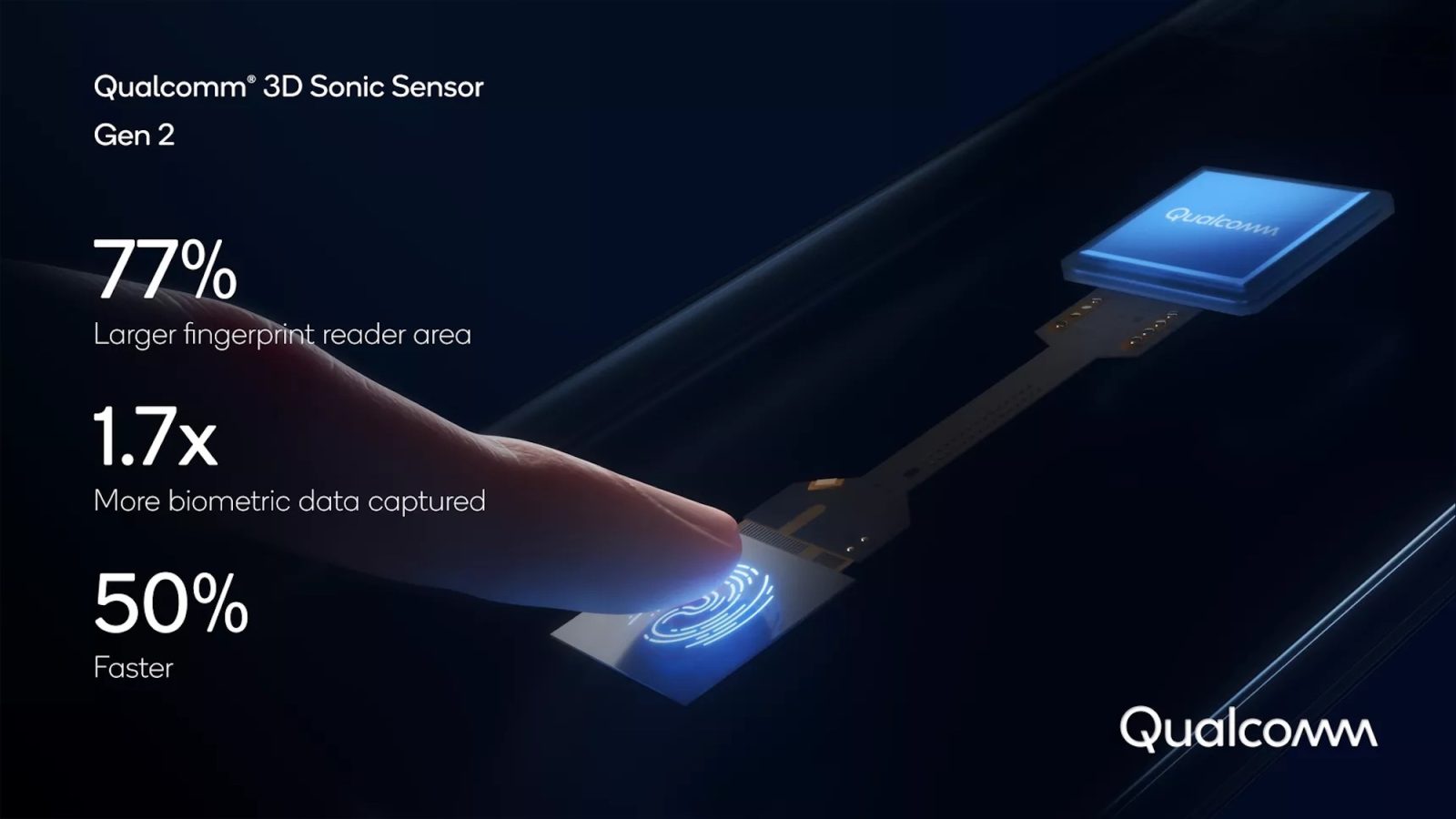
At CES 2021 today, Qualcomm unveiled a new in-screen fingerprint sensor that it says is 50% faster and 77% larger than its previous technology. The new Qualcomm 3D Sonic Sensor Gen 2 is expected to find its way to high-end Android flagships this year, and it comes as Apple works to bring Touch ID back to the iPhone.
As the Verge reports, the new Qualcomm 3D Sonic Sensor measures 8mm x 8mm, up from the previous generation’s 4mm x 9mm surface area. Qualcomm says that when combining the faster processor and the larger sensor, performance should be 50% faster with the Gen 2 than with its predecessor.
The new sensor is technically the third under-display ultrasonic fingerprint reader from Qualcomm, following the original 3D Sonic Sensor and the 3D Sonic Max (introduced in 2019) — which was effectively just a much larger version of the first-gen sensor, but it lacked any real speed improvements. While the 3D Sonic Sensor Gen 2 doesn’t quite match the 3D Sonic Max’s sensor (which measured a whopping 20mm x 30mm) in size, the speed improvements should more than make up for it.
The 3D Sonic Sensor Gen 2 is expected to be used in smartphones such as the Galaxy S21, as soon as in the first half of 2021.
As you may recall, several reports have suggested that Apple will bring Touch ID back to the iPhone lineup as soon as this year. Reliable Apple analyst Ming-Chi Kuo reported in August 2019 that it will release an iPhone with both Face ID and under-screen Touch ID in 2021.
Specifically, Kuo wrote that he expects Apple to use a “variant of Qualcomm’s ultrasonic fingerprint-under-display system.” The specifics here are unclear, and it’s unknown if Apple is still planning to use some form of Qualcomm’s technology, or if it has developed its own.
In addition, the reliable leaker L0vetodream has also reported that in-screen Touch ID will soon make its way to the iPhone. Bloomberg has also said that Apple will add under-display Touch ID to the iPhone.
Offering both Touch ID and Face ID would increase overall convenience and speed of unlocking the iPhone. A user would register their fingerprints and facial signature, and the phone can unlock as soon as either recognition succeeds. There is also the common problem of Face ID not working with face masks, which could be solved by Touch ID also being available as an option.
Finally, if users wanted their iPhones to be as secure as possible, they could theoretically enable both Touch ID and Face ID, and the iPhone would only unlock after both forms of biometric authentication were successfully recognized.
FTC: We use income earning auto affiliate links. More.


Comments